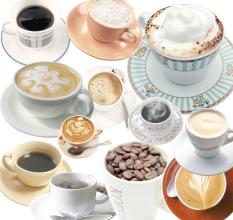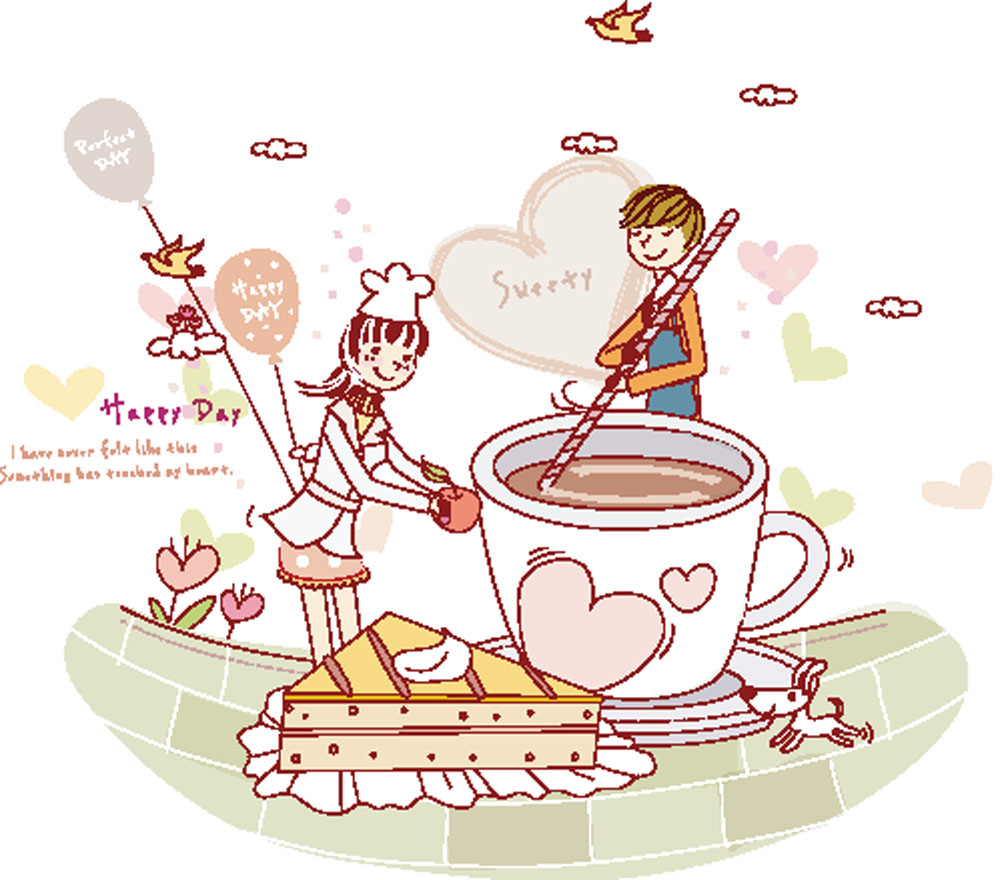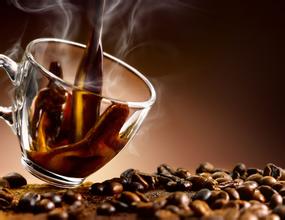Why is coffee so popular in the world, but not tea?
It is an undeniable fact that the development of tea has not formed a world-class chain like coffee. Why tea is not so popular in the world is also a question for many people in China.
Why on earth is it? Tea can be refreshing, tea polyphenols are good for the human body, tea contains much less calories than coffee, but. It is true that there is no world-class great enterprise in China's tea industry.
1. The drinking method of coffee, as well as the content and substance, are more in line with the basic needs of animal desires.
Judging from the data,
Every 100 grams of coffee contains 12 grams of protein, 16 grams of fat, 46 grams of sugars and other carbohydrates. Most of them are soluble in water, or they are absorbed more and more easily by the body because of the drinking method of coffee, which is generally the suspension of crushing coffee beans.
For every 100 grams of tea, there are only 2 grams of water-soluble protein, 0 grams of fat, 4 grams of water-soluble sugars and other carbohydrates. Tea polyphenols in tea are unique and beneficial substances and have no special taste.
Caffeine addiction and addiction are very strong, which is the main reason for the popularity of tea and coffee. The same weight of tea and coffee beans, the proportion of caffeine is similar, but due to different drinking habits, tea soaking drinking way, the human body absorption is much lower than coffee.
This is the real reason why coffee is more popular, and it is also the main reason why Coca-Cola drinks, including fast foods such as McDonald's KFC, are popular all over the world-- including addictive caffeine, "sugar", "fat" and "protein". The sense of taste satisfaction expressed by these "basic nutritional elements of human needs" is the foraging nerve reflex of animals. It is irresistible to "eat, eat, and have sex".
Furthermore, protein and fat can also form amino acids and various esters, ethers, phenols and other fragrant substances, saying hello to human sense of smell in the air. "Hi, I have protein and fat. Smell, come and eat me!" ~ "
Tea contains no fat at all, and the aroma substances in it do not represent any of the four kinds of caffeine, sugar, protein and fat. Scented tea is even fumigated with jasmine in green tea, fermentation is used in oolong tea to increase its flavor, and black tea relies on milk essence sugar to increase its attractive flavor. But these are not the taste of the "basic nutritional elements needed by the human body" contained in the tea itself.
Coffee, because of its high calorie content, can be used as a "meal" for a long time in the spread process. Anyone who has drunk "green tea" knows that not only do they have no energy replenishment, but they will soon feel hungry after drinking it-which is a very bad feeling to drink.
In addition, these "basic nutrients needed by the human body" are richer and more attractive than tea in coffee and the drinking methods of coffee (baking, milk, sugar, broken powder, etc.). More addictive!
In addition, in the development of culture and cooking methods, Oriental tea tends to be clear, bitter, light, thin, astringent, and mostly anti-animal foraging desire, and some tea also contains excessive tannins (especially crude green tea). On the contrary, it will cause adverse absorption of nutrients.
In a word, the drinking method of coffee, as well as its contents and substances, are more in line with the basic needs of animal desires, while the basic anti-animal desires of tea with low sugar, low protein and low fat lead to less popular tea than coffee.
two。 Historically, the development of tea chain is later than that of coffee chain.
The function of European cafes in society was very important in the 17th and 18th centuries. The cafe attracts all kinds of contemporary talents: scientists, philosophers, artists, musicians. They got excited in the cafe and argued with each other about many of the issues of the year. It can also be said that cafes have cultivated a lot of theories and ideas. Some revolutions (such as the French Revolution) were also born in cafes.
The top 10 coffee chains in the world were established after World War II, and the tea chain is still developing, at least 50 years later than coffee. Although the West has entered a post-industrial era of excess calories and widespread obesity, (traditional) tea, which does not have the advantages of sugar, fat and protein, is still difficult to form a world-class chain. Milk tea is likely to be blamed for being too picky about human appetite.
Light things are good, but heavy things can capture most people, so Sichuan food is all over the country and hot pot restaurants are popular.
Tea was first chosen by the British aristocracy to get rid of a lot of bitter, astringent black tea (rather than green tea), and then cooked to add a lot of sugar and milk (see the popular feeling of coffee? ), the formation of more people's favorite English black tea, and more later, the emergence of sweeter and heavier milk tea, tea drinks began to really go to the world.
3. In fact, we need not be too pessimistic.
Tea also has a high position in western culture and history. English people like to drink afternoon tea. Americans have long been accustomed to drinking tea, and don't forget that the Boston "tea party" was one of the causes of the War of Independence. Now most cafes in Europe and America serve tea. Starbucks has its own tea brand Tazo. There used to be tea in the name of The Coffee Bean and the Tea Leaf! When you go to a big supermarket in the United States, you will find a whole row of tea with more kinds than coffee. There used to be tea in the name of the store! When you go to a big supermarket in the United States, you will find a whole row of tea with more kinds than coffee.
Look at our beverage industry, almost all the unsweetened ones are dead. Our sweetened tea sells well as well, and there are more tribute tea, le tea and all kinds of milk tea shops on the street than coffee shops. So two years ago, there was a sugar-free tea with oriental leaves, and I knew it was a dead end. There are those strange-tasting drinks that almost die as soon as they come out, such as Wa Coffee Coke and Gavas, which don't need any business analysis at all.
The largest tea company in the world is Lipton, but it can be said that Lipton's tea is the worst tea I have ever tasted, and the price is not the lowest. If you use blisters directly, it tastes worse than leaves, but why do you sell best? because others mainly drink with milk or sugar.
4. Is tea popular in today's world?
In fact, if we just take out Starbucks coffee and Chinese tea for discussion, then, as everyone said, there are many reasons, absolutely because we are not thinking right. But tea is not very popular in the world, and I'm afraid I can't fully agree. Lipton Black Tea of Britain, you must know, I guess you can't deny its influence.
Secondly, the three highly fragrant black teas recognized in the world: Darjeeling black tea in India, Assam black tea and Keemun Black Tea in China, are also highly praised internationally. Except for the serious unsalable situation of Keemun Black Tea in China, the rest of Darjeeling black tea and Assam black tea are sold in large quantities all over the world every year. This kind of scene is not just now, but it first appeared before the Opium War, and at first it was only sold to Britain (in fact, the development of India's tea industry was inseparable from the support of Britain), and then gradually spread to the whole world. If you are interested, you can take a look at the Tea War.
In fact, the popular coffee shops are chain stores, can not choose too many varieties of coffee, do not pay much attention to raw materials, more fast food, take a look at Starbucks, costa and so on. The corresponding concept should be the chain of milk tea shops in the streets, "tribute tea", "big card", "85 degrees c" and so on. When you look at it in this way, you will find that tea drinks are actually quite popular, but few of them have rushed out of the country (I know those who have opened branches in Southeast Asia), and there is a gap between the guest list and the scale of coffee chains.
But if you think about the price of a cup of frozen lemon tea and Hot Tea, HK Style in the teahouse, you will know how popular the tea is.
5. Can tea make a world-class chain?
The tea industry should achieve a chain, comparing the differences of coffee chains:
First, the tea industry is currently short of talents.
Second, Chinese teahouses pursue privacy, personality and high value-added, while Starbucks pursues overturning rate, versatility and cost performance.
Third, Chinese tea is often garrulous, pursuing a superficial sense of form, but neglecting its real value to users.
Fourth, the Western lifestyle behind Starbucks has been a powerful force in the past 30 years, and of course there may be new changes in the future.
Fifth, Starbucks has no advertising and will inject its heart into lighting word-of-mouth with experience, including employee incentives such as the matching coffee bean program.
For now, it is difficult to coordinate tea standardization and production capacity.
The premise of industrialization promotion is that under the condition of large production capacity, it can still ensure consistent quality.
Due to the special process of Chinese tea processing, the quality of tea is controlled by many human factors. If industrial promotion is needed, it is difficult to ensure balanced quality in large-scale production, and there is no quantitative standard for quality, which in turn limits production capacity. So we can only take the minority and sophisticated route.
The most popular coffee shops are chain coffee shops, where the coffee taste can only be cheap coffee flavor. While high-end coffee shops and high-end teahouses are high-end existence, it is difficult to spread out on a large scale. Tea is a relatively high-end drink, it is difficult to become coffee that has both high-end and cheap properties.
But tea brands such as Lipton have developed a mediocre but stable taste through a mix of tea products. This is in line with standardization, but also to ensure its production capacity, so it can achieve a global tea industry chain. But you know, that has nothing to do with good, if you want to make a tea chain, you need to change the business philosophy, things are good things, see how to play.
Recently, a kind of product called "tea cream" has appeared in the world, which is made of Pu'er, shaped like a thin chocolate, each grain is individually packed in tin foil and put together in a very beautiful wooden box. A pot of two tablets, gradually melt away, you can drink several bubbles. According to the tea owner, this is his initiative to attack the giants of the industry. I am fortunate to listen to his strategy and think it is very clever, but if you ask about the taste …... First of all, I am not the fans of Pu'er, so I think this is a pot of Pu'er.
6. The tea market needs to be cultivated and the brand needs to grow slowly.
In fact, the problem at this point is easy to explain, tea is not popular, it is completely the lack of good brands and traders in the whole market to develop high-level chain brands. It's just a matter of management. after all, the market has to be cultivated and the brand has to be slowly grown up. Forget about lifestyle, how many coffee-drinking lifestyles do Chinese people have?
Expecting a great god to do this, I am optimistic that by my age, my children should be able to see a tea chain of the same size as Starbucks. Everyone still maintains an optimistic and positive attitude.

Important Notice :
前街咖啡 FrontStreet Coffee has moved to new addredd:
FrontStreet Coffee Address: 315,Donghua East Road,GuangZhou
Tel:020 38364473
- Prev

Starbucks faces Challenge: multi-Coffee Brands compete for Chinese Market
Starbucks is always a brand with no shortage of topics. Recently, there are media reports in the United States, a Chicago woman sued Starbucks for $5 million because there were too many ice cubes in cold drinks. The news drew attention to Starbucks, which was widely questioned about its high pricing in China. A large amount of money is claimed for more ice in a drink, which is for Chinese consumers
- Next

What equipment do the top cafes in foreign countries use?
With the promotion, popularization and development of Specialty coffee in the United States and other markets around the world, the creative market in the United States has also given birth to some new coffee equipment, including pressure swing extraction Espresso coffee machines (La Marzocco, Synesso and Slayer), negative pressure extraction coffee / tea machines (Bkon), semi-automatic siphon coffee /
Related
- What ratio of water temperature and ground does the smart cup method use to press coffee? The difference between brewed coffee and filtered coffee?
- What is the standard process for the purpose of coffee cup testing? What is the difference between hand-brewed coffee and cup testing?
- How to use hand-brewed coffee paragon small golden balls? How does cold coffee lock in the aroma of coffee?
- Is American coffee black? What is the difference between American coffee and drip coffee?
- Unexpected! Well-known tea beverage brand Lele Tea will withdraw from the Zhengzhou market!
- Starbucks enters the fashion and beauty industry?! Netizen: Give me an ice American eye cream
- Why can American refills for free? The difference between Americano and American drip pot coffee
- Being chased out of the rain in front of Starbucks?! Store: Sheltering from rain under umbrellas poses a safety hazard
- The white moonlight has changed?! Lucky launches "Big Winter Pear American"
- Hand-brewed coffee three-stage method, high-sweet and universal brewing method to share! What does the high sweet water level of hand-brewed coffee mean?

